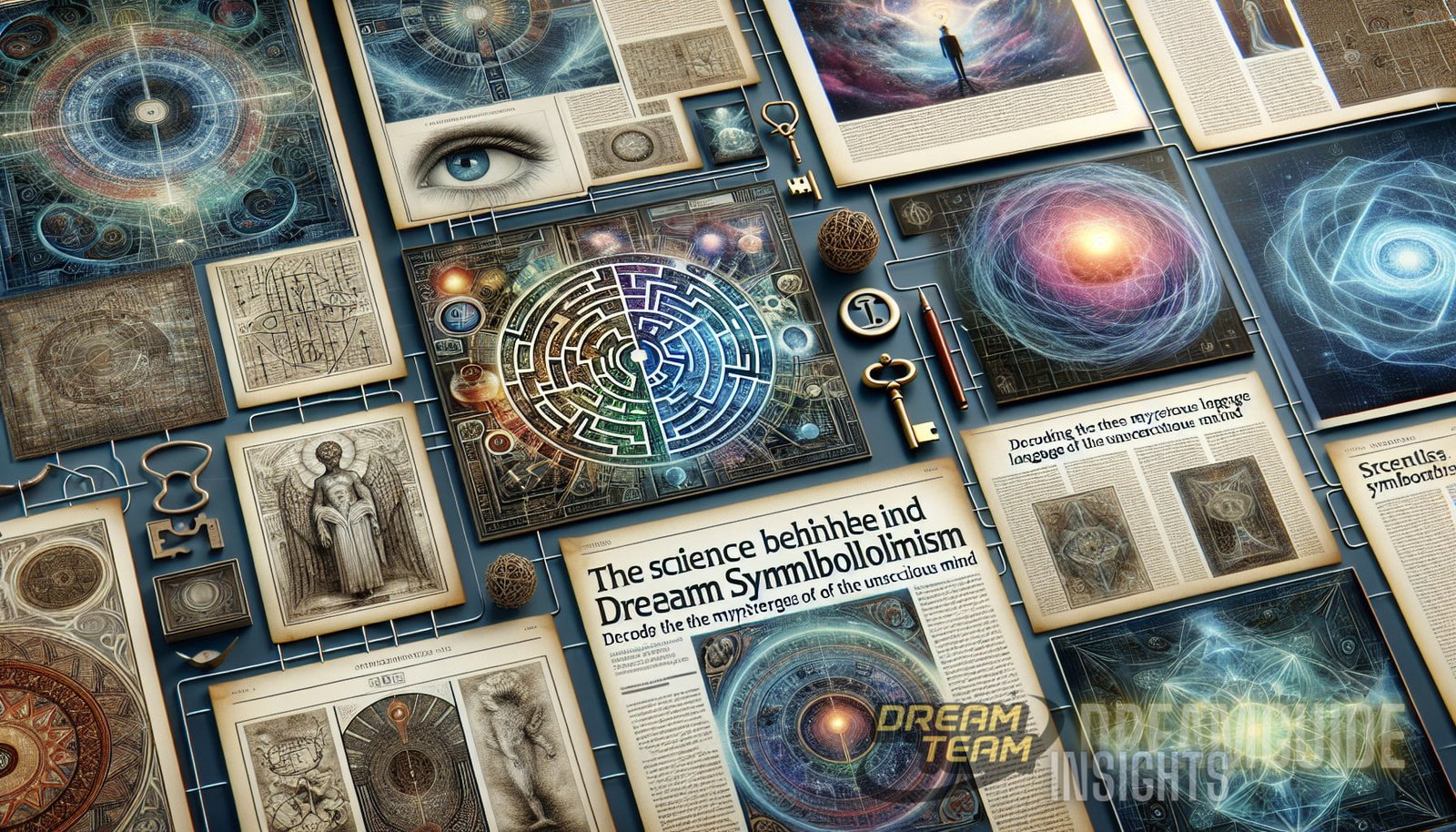Article: The Science Behind Dream Symbolism: Decoding the Mysterious Language of the Unconscious Mind
Dream symbolism has fascinated humans for centuries. People have long been intrigued by the mysterious language of the unconscious mind, wondering what hidden messages their dreams might contain. Scientists and psychologists have devoted considerable effort to understanding the science behind dream symbolism, seeking to decode the complex and often surreal imagery that appears in our dreams. In this article, we will explore the scientific theories and research that shed light on the fascinating world of dream symbolism and uncover the meaning behind the enigmatic language of our dreams.
The Unconscious Mind: A Window into the Complex Depths of Our Being
Before delving into the intricacies of dream symbolism, it is important to understand the concept of the unconscious mind. According to psychoanalytic theory developed by Sigmund Freud, the unconscious mind is a reservoir of thoughts, desires, and memories that are not accessible to conscious awareness.
The unconscious mind is believed to play a significant role in shaping our thoughts, emotions, and behaviors. It can be seen as a window into the complex depths of our being, housing repressed memories, unresolved conflicts, and hidden desires. Dreams, as a product of the unconscious mind, offer a unique glimpse into this hidden realm of our psyche.
Many theories of dream interpretation emphasize the role of the unconscious mind in shaping dream content. According to these theories, dreams serve as a way for the unconscious mind to express its desires, fears, and concerns that may be difficult to acknowledge in waking life.
In order to understand dream symbolism, researchers have turned to innovative methods such as analysis of dream content, neuroimaging studies, and psychological experiments. These scientific approaches have provided valuable insights into the meaning and function of dream symbolism.
The Function of Dream Symbolism
One theory suggests that dream symbolism serves as a way for the unconscious mind to communicate its messages to the conscious mind. The use of symbols in dreams allows the unconscious mind to express complex emotions, conflicts, and experiences in a condensed and symbolic form.
By analyzing the symbols that appear in dreams, researchers can gain valuable information about the unconscious mind and the individual’s psychological state. For example, recurring symbols in dreams, such as falling or being chased, may indicate feelings of insecurity or a lack of control in waking life.
Another function of dream symbolism is thought to be cognitive processing. Dreams provide an opportunity for the brain to process and consolidate information from the day, helping to encode memories and integrate new experiences into existing knowledge.
Research has shown that dream content often includes elements related to recent experiences, suggesting that the unconscious mind is actively processing and organizing information during sleep. The use of symbols in dream imagery may facilitate this cognitive processing by condensing complex information into a more easily digestible form.
The Language of Dream Symbolism: Decoding the Meanings
Dream symbolism is a complex language that requires interpretation to uncover its hidden meanings. Symbols in dreams often have personal associations that can vary from person to person, making the task of decoding dream symbolism a highly individualized process.
One approach to understanding dream symbolism is through exploring common themes and archetypes. Archetypes are universal symbols and themes that are present in the collective unconscious, a concept developed by psychoanalyst Carl Jung. These archetypes, such as the hero, the trickster, or the shadow, can be found in the dreams of individuals from different cultures and backgrounds.
By recognizing the presence of archetypal symbols in dreams, researchers can gain insight into the collective aspects of the human experience. For example, the archetype of the mother may appear in dreams as a symbol of nurturing, comfort, or protection.
However, it is important to note that dream symbols are highly subjective and can have different meanings for each individual. A snake, for example, may represent fear or danger for one person, while symbolizing transformation or renewal for another.
Dream Characters: The Actors of the Unconscious Mind

Dream characters play a crucial role in the language of dream symbolism. They can represent different aspects of the individual’s personality, desires, or conflicts. These characters often interact with the dreamer, engaging in conversations or actions that provide clues to their symbolic meaning.
For example, a dream character that appears as a mentor or guide may represent the dreamer’s inner wisdom or the need for guidance in a particular area of their life. Conversely, a dream character that appears as an antagonist or threat may symbolize an unresolved conflict or source of stress.
Understanding the role and meaning of dream characters can provide valuable insight into the unconscious mind and the individual’s psychological state.
To explore the power and meaning of dream characters in cognitive processing, check out this article by Dream Guide Insights.
The Intricate Link Between Water and Dream Interpretation
Water is a common theme in dreams and has been associated with various symbolic meanings. The interpretation of water in dreams can vary depending on the context, personal associations, and cultural background.
Water often symbolizes emotions, representing the deep, unconscious currents of the psyche. Calm, clear water may indicate a sense of peace and emotional stability, while turbulent or murky water may suggest emotional turmoil or unresolved feelings.
To explore the intricate link between water and dream interpretation, revealing the depths of the psyche, take a look at this article by Dream Guide Insights.
The Science Behind Dream Symbolism: Research and Findings
Scientists have used various methods to study dream symbolism and uncover its underlying mechanisms. Neuroimaging studies have provided insights into the brain activity during dreaming, shedding light on the neurological processes that occur during sleep.
One study conducted by researchers at the University of California, Berkeley, used functional magnetic resonance imaging (fMRI) to measure brain activity during REM sleep, a stage of sleep associated with vivid dreaming. The study found that certain brain regions, such as the amygdala and hippocampus, were more active during REM sleep, suggesting their involvement in the processing of emotional and memory-related content in dreams.
Other studies have focused on the analysis of dream content to unravel the symbolism and meaning behind dream imagery. By collecting dream reports from participants and systematically analyzing the symbols that appeared in their dreams, researchers have been able to identify common themes and patterns.
For example, a study published in the Journal of Personality and Social Psychology found that certain symbols, such as teeth falling out or being naked in public, were consistently associated with feelings of embarrassment or vulnerability. These findings provide evidence for the emotional significance of dream symbolism.
Conclusion
Dream symbolism is a fascinating area of study that offers insights into the mysterious language of the unconscious mind. Through scientific research and analysis, researchers have made significant strides in decoding the meaning behind the symbols that appear in our dreams.
While dream symbolism remains a highly individualized process, understanding the archetypal and personal meanings of dream symbols can provide valuable insights into our psychological state and help us gain a deeper understanding of ourselves. By exploring the science behind dream symbolism, we can unlock the hidden messages of our dreams and tap into the profound wisdom of the unconscious mind.
External Link: https://en.wikipedia.org/wiki/Dream_interpretation



